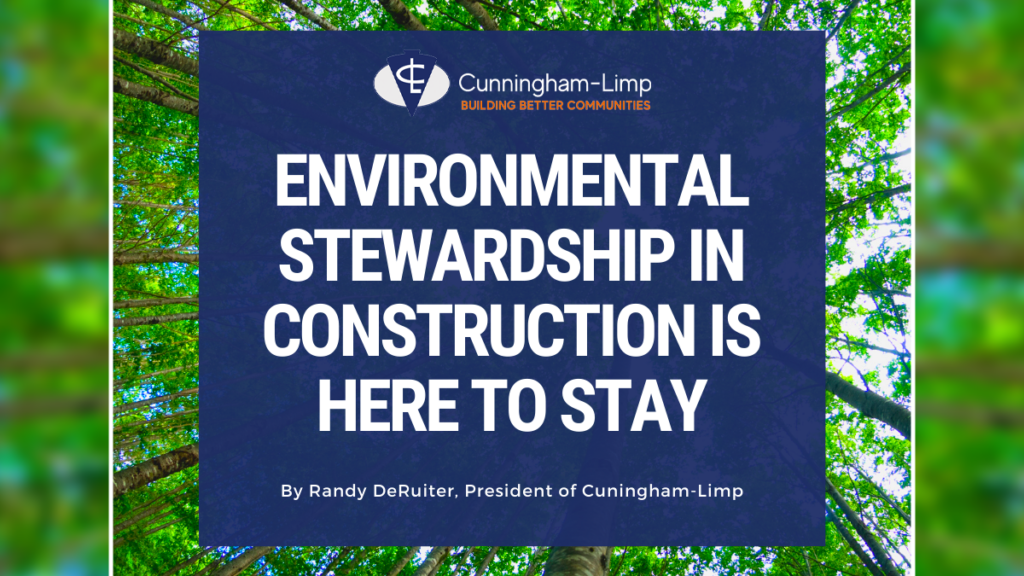

Written by: Randall K. DeRuiter, P.E., President

There are many reasons for developers and builders to be more innovative and creative in addressing environmental elements of construction projects. Certainly, the Biden administration will push Congress for rules and regulations that reduce human impact on climate change. But market leaders are already ahead of such policies as we’re learning every day from many of our clients.
There is now a business case for incorporating environmental solutions beyond the former gold standard of “LEED Certified.” Clients are seeking new solutions including how they heat and cool their buildings, green roofs, and landscapes that capture rainwater before it leaves their property, minimizing the amount of water and other natural resources they bring into their buildings, and other innovations.
I recently met with an organization that is designing a net-zero headquarters. It’s an adaptive reuse of a 1970s-era building and new construction. Their funding model depends on grants and donations, so it surprised some that they would spend so much money to be net-zero. His explanation was a sign of the times. The money they’ll save in the near- and long-term far outweighs their initial investment, and he could prove it. As stewards of donations and grants, their design ensures those investments will positively impact the organization’s mission for generations.
To complicate things further, all new projects face the rising costs of traditional construction methods. To offset these costs, investors demand operating costs be as low as possible. What we would have called “luxuries” or “doing the right thing” a short while ago are now expected and even required by those seeking maximum return on hefty investments. Environmental sustainability practices are becoming a point of evaluation facing vendors as well as requests for proposals (RFPs) being issued to manufacturers, and other businesses are being asked what their plan is.
Such demands have greatly increased the complexity of the projects we build. They require specialized equipment and materials and the knowledge and skill to install them, so they work. They also add a whole new series of decisions to the planning process. Many green elements add cost, time, or both. Not everyone is ready for a full “carbon-zero” approach but the gap between that and doing nothing is immense. Everyone is asking “Where does my environmental dollar go the furthest?” and the answer to that question is different for everyone. Now more than ever, a holistic approach is required to balance the priorities and deliver on new promises to customers, employees and other stakeholders.
These are challenging times for our clients and for developers and builders like us. What we are experiencing is not temporary, though. Whether companies are mandated by government rules and regulations, or whether they opt to make investments that pay dividends in the long run, these moves towards greater environmental sustainability are here to stay. Our company is prepared to join our industry on its way to meeting and exceeding those expectations.
Originally published on cunninghamlimp.com